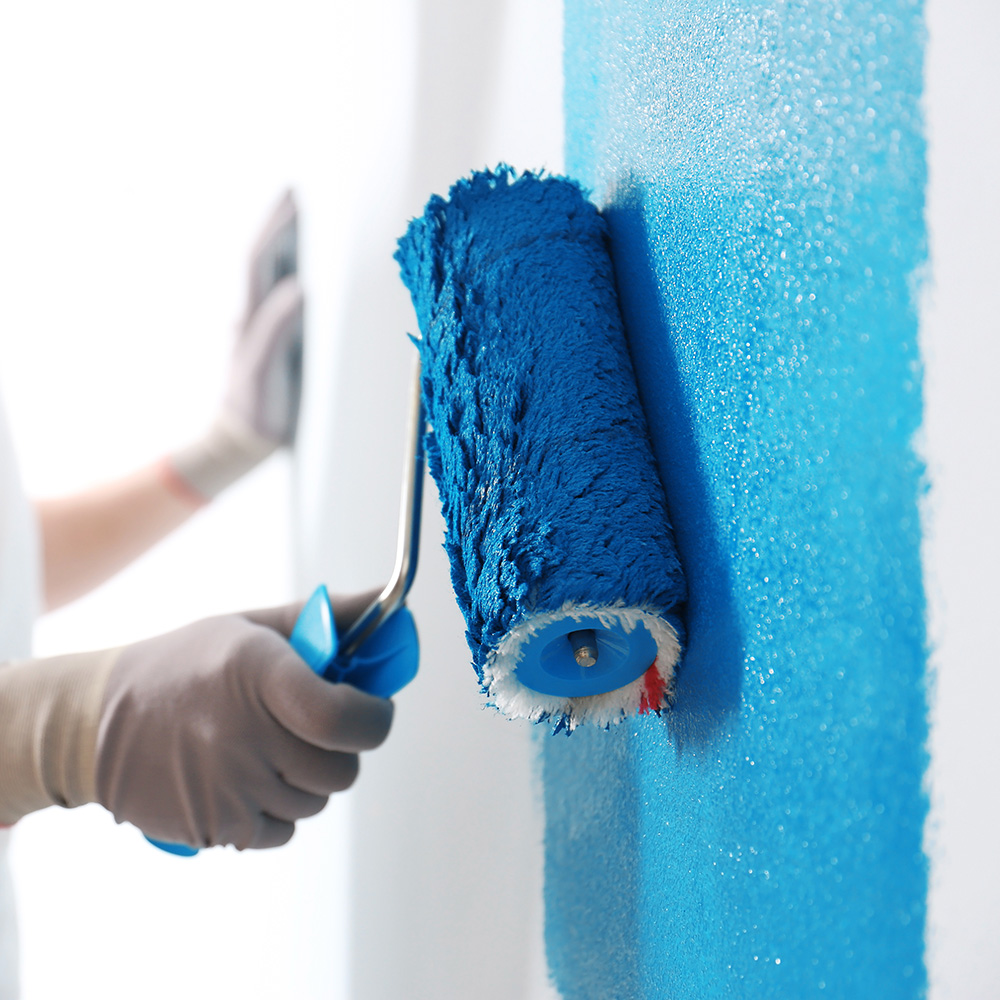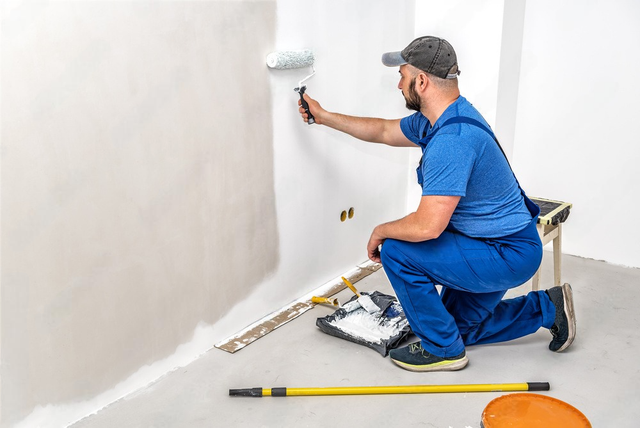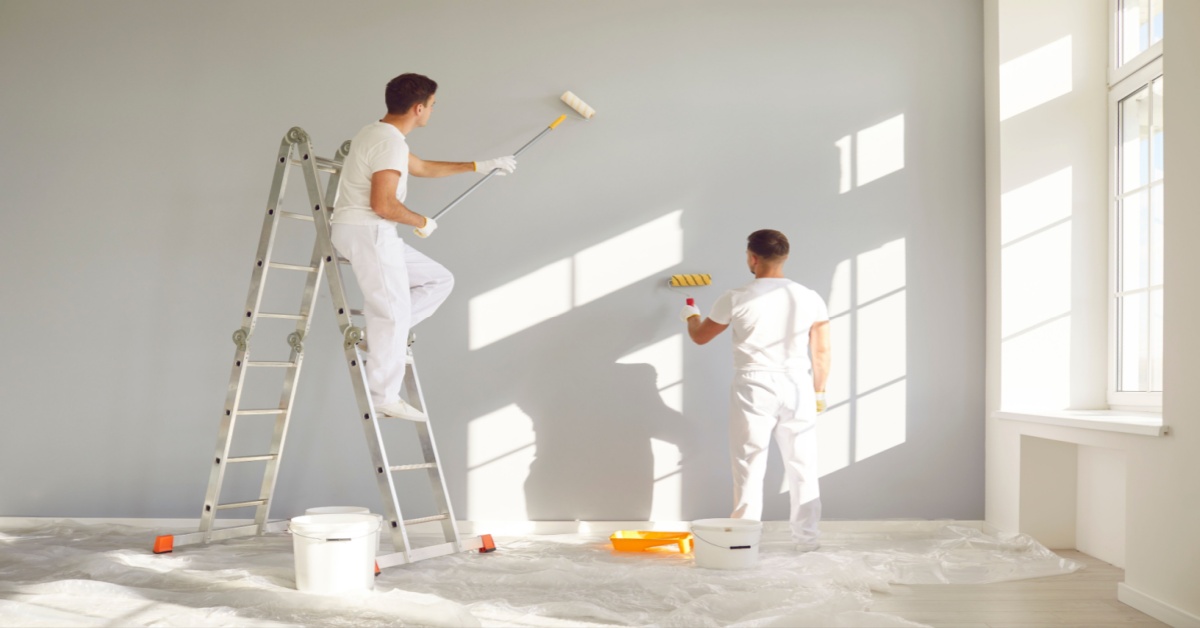Remain Ahead With New Paint Trends: Blending Strategies for Modern Interiors

The Increase of Color Gradients in Interior Decoration
As designers progressively seek innovative methods to improve rooms, the increase of shade slopes in interior decoration has amassed significant interest. This method, defined by the smooth shift between two or more shades, permits a vibrant aesthetic impact that can transform a regular space right into a dynamic atmosphere. Shade gradients can evoke emotions, influence perceptions of area, and develop prime focus, making them a flexible choice for various layout styles.
The application of gradients expands past wall surfaces; they can be properly employed in furnishings, fabrics, and devices. Developers usually experiment with varying shades to achieve depth and intrigue, attracting a variety of looks from minimal to eclectic. Furthermore, the flexibility of slopes allows their usage in both commercial and domestic settings, accommodating varied clientele. As patterns evolve, using color slopes symbolizes a shift towards even more customized and expressive indoor areas, showing individual tastes and lifestyles.
Welcoming Ombre Techniques for a Dynamic Look
Ombre methods have emerged as a charming selection for those aiming to add deepness and motion to modern-day insides. This slope effect changes smoothly from one shade to another, producing a visually striking focal factor in any type of room. Developers value ombre for its versatility; it can be applied to walls, furniture, or even ornamental accents, permitting unique expressions of style.
The method works especially well with soft colors, offering a calm atmosphere, while bold shades can invigorate a room. Homeowners can trying out various color combinations, choosing contrasting shades for a significant impact or harmonious tones for a subtle impact. The application of ombre is not limited to a solitary wall; it can expand across a room, enhancing the understanding of room and light.
As a contemporary trend, ombre techniques deal with diverse preferences, enabling people to personalize their insides and accept creativity in their layout approach. benjamin moore paint store corpus christi.
Textured Walls: Layering Paint for Depth and Passion
Textured wall surfaces can substantially boost the aesthetic appeal of modern-day interiors by including depth and passion. Methods for developing appearance, thoughtful color combinations, and the right tools for layering are crucial parts in attaining this impact. Exploring these elements enables a tailored and dynamic technique to interior decoration.
Methods for Texture Development
Creating aesthetic rate of interest in indoor rooms usually pivots on the artistic application of structure. Numerous strategies can be employed to accomplish this, such as sponging, cloth rolling, and stippling. Sponging involves utilizing a damp sponge to use a 2nd shade over a skim coat, producing a soft, mottled effect. Dustcloth rolling, on the various other hand, uses a rolled rag to use paint, causing a more dynamic structure. Stippling uses a stiff brush or device to dab paint onto the surface area, developing a distinct pattern. Additionally, layering different surfaces, such as matte and glossy, can boost depth. These methods not just supply aesthetic appeal however likewise add to the overall setting of modern interiors, encouraging a responsive experience.
Shade Mixes for Effect
Layering paint not just boosts structure however additionally opens up a world of color mixes that can substantially affect the mood of a space. By blending complementary shades, designers can produce an unified effect that invites heat or coolness, depending on the desired atmosphere. For circumstances, abundant planet tones combined with soft pastels can evoke a serene setting, while strong, different shades can include vibrancy and power. Additionally, including metal or glossy finishes within the layers can present a dynamic aesthetic component, capturing light and boosting the deepness of the shade scheme. Ultimately, thoughtful shade mixes via layering paint give a chance to reveal specific design while changing normal walls into bewitching focal points.
Tools for Layering Result
Numerous devices are crucial for attaining a successful layering result in paint applications, which can change wall surfaces right into enchanting aesthetic experiences. Brushes and rollers are basic, with varied sizes enabling for different structures and coatings. Specialized devices like cloths and sponges can develop one-of-a-kind patterns and depth, while combination blades supply accuracy for even more defined lines. For bigger areas, utilizing a stippling brush can add an intricate coating. In addition, spray weapons can efficiently apply numerous layers for a smooth, even coat. Painters ought to also think about painter's tape to develop tidy edges in between layers. By making use of the right tools, one can effectively enhance the aesthetic charm of insides, making each wall a fascinating prime focus.

The Power of Color Obstructing in Modern Spaces
As modern-day interior decoration remains to develop, shade blocking arises as a powerful strategy that can change areas with vibrant visual influence. This technique involves the strategic placement of contrasting colors to produce specified areas within an area, enhancing both the visual appeal and capability of the space. corpus christi paint store. By using huge swathes of shade, developers can direct the eye and stress building components, resulting in a dynamic atmosphere
Color blocking is not restricted to walls; it can additionally be used to furniture and style, enabling for endless customization. Combining a vibrant color with a neutral tone can develop a striking focal point get more info while preserving equilibrium. This technique motivates imagination, making it possible for home owners to express their individualities with unique shade combinations. Inevitably, color obstructing works as an efficient method to revive modern interiors, making areas feel fresh, energised, and visually interesting.
Including Metallics for a Glamorous Complete
Exactly how can metallics boost the sophistication of contemporary interiors? Metal surfaces work as a striking focal factor, adding depth and visual passion to areas. They can transform a standard room into a classy resort with the subtle interplay of light and representation. Designers typically advise integrating metallics in accent wall surfaces, ceilings, or furnishings to produce a luxurious atmosphere without overwhelming the space.
Numerous metallic shades-- such as bronze, silver, and gold-- offer adaptability, enabling house owners to customize their aesthetic. A soft gold can pass on heat, while a streamlined silver can provide a modern touch. When coupled with neutral tones, metallics improve the overall style, giving an innovative comparison that draws the eye.
Integrating metallic paint right into trim or moldings can additionally elevate building details, producing a sleek finish. Eventually, the tactical use of metallics can infuse modern-day interiors with glamour and improvement, making them really enchanting.
Innovative Use Stencils for Unique Patterns
Transforming walls with stencils can infuse modern insides with distinct personality and style. This creative strategy allows developers and house owners to produce personalized patterns that reflect personal visual appeals. Stencils can vary from detailed geometric designs to whimsical concepts, enabling a vast variety of expressions. By choosing contrasting shades, patterns can elevate a space's visual appeal and function as focal points without overwhelming the area.
Stencils are versatile; they can be applied to various surfaces, consisting of walls, furnishings, and even ceilings. This adaptability makes stenciling an optimal option for DIY lovers looking to improve their space economically. In addition, the convenience of application and removal enables trial and error, allowing people to freshen their design with marginal effort. Eventually, innovative use patterns not just changes average surfaces but additionally gives a possibility for self-expression, making them a trending option in contemporary interior design.
Blending Matte and Glossy Coatings for Contrast
The interaction of matte and shiny finishes can create a striking aesthetic dynamic in contemporary insides. Designers commonly use this comparison to enhance building functions and specify rooms. Matte coatings, with their soft, non-reflective quality, can produce a sense of warmth and affection, making them perfect for walls and larger surface areas. On the other hand, shiny surfaces show light, adding vibrancy and depth, making them ideal for accents such as trim, moldings, or furniture.
The mix of these textures can lead the eye and stress centerpieces within a space. As an example, coupling a matte-painted wall with shiny cabinetry can create an innovative equilibrium. Additionally, the careful application of both surfaces can evoke various moods while boosting the overall aesthetic. As homeowners progressively look for personalized areas, mixing matte and glossy surfaces offers a versatile strategy to attaining modern beauty and aesthetic interest in interior decoration.
Regularly Asked Concerns
What Tools Are Best for Mixing Paint Methods?
A range of tools are ideal for mixing paint methods, including foam rollers, brushes with soft bristles, sponge applicators, and airbrushes. Each device offers distinct effects, improving the blending procedure for various imaginative applications.
Just How Can I Fix Mixing Mistakes?
To take care of mixing errors, one need to gently sand the affected area, use a guide if necessary, and after that meticulously reapply paint using a soft brush or sponge to accomplish a smooth shift and restore the preferred effect.
Are There Details Paint Brands Recommended for Mixing?
A number of paint brand names are advised for blending, consisting of Benjamin Moore, Sherwin-Williams, and Behr. These brand names use high-quality surfaces and a vast array of shades that help with smooth changes and efficient mixing strategies in numerous indoor tasks.
Can I Blend Paint Without Expert Assistance?
Yes, blending paint without specialist help is feasible. With practice and the right tools, people can attain desirable results. Various online tutorials and guides can aid in mastering blending methods for personal projects.

How Much Time Does Blended Paint Last on Walls?
Mixed paint can last anywhere from five to ten years on wall surfaces, depending upon variables such as the quality of paint made use of, surface prep work, and ecological problems. Regular upkeep commonly improves longevity and appearance.
As developers progressively look for cutting-edge means to boost areas, the rise of color gradients in indoor design has actually gathered substantial interest. The strategy works particularly well with soft hues, offering a calm atmosphere, while vibrant colors can stimulate a space. Strategies for creating texture, thoughtful color combinations, and the right devices for layering are crucial components in achieving this impact. Layering paint not just enhances structure yet likewise opens up a world of color mixes that can drastically influence the state of mind of an area. As contemporary interior design proceeds to evolve, shade blocking emerges as an effective strategy that can change spaces with bold visual effect.